Description
NCRP is coordinating an expansive epidemiologic effort entitled the One Million U.S. Persons Study of Low Dose Radiation Health Effects (Million Person Study) (MPS). The primary aim of the MPS is to provide scientifically valid information and improve precision on the level of radiation risk when exposures are received gradually over time, and not acutely as was the case for Japanese atomic-bomb survivors. The major health outcome of interest for the MPS is cancer mortality, but other causes of death such as cardiovascular disease and cerebrovascular disease will be evaluated.
The validity of the MPS is tied to the validity of the dose reconstruction approaches to provide accurate estimates of organ doses (i.e., the absorbed dose averaged over all parts of an organ or tissue) and their accompanying uncertainties. To date, the derivation of the annual organ doses and their associated uncertainties from the available recorded dose quantities and other information has been performed for part of the U.S. Department of Energy (DOE) workers, is well under way for the atomic veterans, has been undertaken for the nuclear power plant workers and the industrial radiographers, and is at the planning stage for the medical radiation workers.
Organ doses from exposure to all the relevant external and internal sources for a given population are of interest. For most of the MPS cohorts, external sources were the predominant mode of exposure. However, for the DOE workers, preliminary estimates indicate that about half of the DOE workers also were exposed from intakes of radionuclides. Following a presentation of the status of the cohorts involved in the MPS and of the available recorded dose quantities, the recommended guidelines regarding the estimation of annual organ doses and their uncertainties for the purposes of an epidemiologic study are presented and discussed.
Goal
Provide guidance in the derivation of organ doses and their associated uncertainty for epidemiologic studies in general, but with a focus on the populations that make up the MPS coordinated by NCRP. The study populations include DOE workers, atomic veterans, nuclear power plant workers, medical radiation workers, and industrial radiographers.
2016 Accomplishments
- February 17-18, 2016 … seventh meeting of the full committee (at ORAU) List of potential expert reviewers reviewed and expanded
- June 8, 2016 … Draft distributed for PAC 6/expert review
- August 19, 2016 (teleconference) … discussed review comments on uncertainty approaches in draft; reached consensus on adding text to accommodate the comments
- November 1, 2016 …distribution of draft for Council review and approval (6-week review period) (comment deadline December 13, 2016)
Planned schedule for completing PAC 6/expert review draft
Prior Accomplishments
- April 2-3, 2013: First meeting of full committee [at Oak Ridge Associated Universities (ORAU)] Presentations on various ongoing activities related to the MPS
- June 19, 2013 (webinar): Preliminary discussions of each section’s content
- September 15, 2013: First draft of consolidated input sent to members
- October 1-2, 2013: Second meeting of full committee (at ORAU) Review draft and schedule of next steps
- April 1, 2014: Revised consolidated draft distributed to members
- April 29-30, 2014: Third meeting of full committee (at ORAU) Section-by-section review
- July 28, 2014 (teleconference): Review progress on writing assignments
- October 28-29, 2014: Fourth meeting of full committee Review of consolidated draft (dated October 17)
- January 22, 2015 (webinar): Adjustments to the presentation and discussion of uncertainties
- February 17, 2015 (teleconference): Agreement on reworks needed on sections and appendices that discuss the uncertainties in organ dose
- April 28-29, 2015: Fifth meeting of full committee (at ORAU) Review of revised draft (dated April 12)
- November 3-4, 2015: Sixth meeting of the full committee (at ORAU) Section-by section review of current draft (dated October 25)
Review of draft outline
Made assignments for revised sections
Significant adjustments to outline to bring all the main principles and guidance on derivation of organ doses and their uncertainties into one location
Two presentations on treatment of uncertainties in derivation of organ dose, and one on the unique composition of the radiation environment in space
Detailed discussions on nuclear power plant workers and medical radiation workers: Two MPS cohorts that have many challenges in deriving organ doses from available personal monitoring records and other work-related information when the specific exposure conditions for individuals are not directly known.
Generated a list of potential expert reviewers
Generated a provisional timetable to produce the PAC 6/expert review draft
Scheduled Activities
First quarter 2017: Publication of final report
Support
- Federal agencies:
- National laboratory collaborators:
- Academic/research institutions:
- Private-sector collaborators:
National Aeronautics and Space Administration
National Cancer Institute
U.S. Department of Defense / Defense Threat Reduction Agency
U.S. Department of Energy
U.S. Department of Veterans Affairs
U.S. Environmental Protection Agency
U.S. Nuclear Regulatory Commission
Los Alamos National Laboratory
Oak Ridge Institute for Science and Education
Oak Ridge National Laboratory
Fred Hutchinson Cancer Research Center
Harvard University
University of Southern California
Vanderbilt University
International Epidemiology Institute
Landauer, Inc.
Oak Ridge Associated Universities
Risk Assessment Corporation
Membership
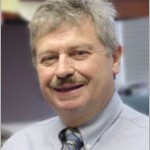
ANDRE BOUVILLE was born and educated in France. He came to the United States in 1984 to work for the National Cancer Institute (NCI). His initial assignment was to estimate the thyroid doses received by the American people from 131I released by the nuclear weapons tests that were conducted at the Nevada Test Site in the 1950s. This study led to the assessment of doses from nuclear weapons tests conducted at other sites all over the world, as well as to a large number of dosimetry studies related to the Chernobyl nuclear reactor accident. He was the head of the Dosimetry Unit of the Radiation Epidemiology Branch at NCI until he retired at the end of 2010. Throughout his career, Dr. Bouville actively participated in the preparation of scientific reports under the umbrella of international organizations, notably the United Nations Scientific Committee on the Effects of Atomic Radiation, the International Commission on Radiological Protection, the International Commission on Radiation Units and Measurements, the World Health Organization, the International Atomic Energy Agency, and the Nuclear Energy Agency. Regarding U.S. organizations, Dr. Bouville was a member of NCRP for 12 y, became a Distinguished Emeritus Member in 2011, and is currently Chair of Scientific Committee 6-9 on the dosimetry for the Million-Worker Study. He has served on numerous National Academy of Science committees, is a Lifetime Associate of the National Academies, and is currently a member of the Committee on the analysis of cancer risks in populations near nuclear facilities. For all his achievements, Dr. Bouville was a recipient of the Presidential Rank Meritorial Award in 2003. |
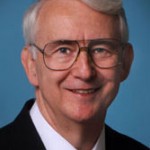
RICHARD E. TOOHEY received his PhD in physics from the University of Cincinnati in 1973. He spent the first part of his career at Argonne National Laboratory in both research and operational health physics. He recently retired from Oak Ridge Associated Universities, where he served as director of the Radiation Internal Dose Information Center, as Senior Health Physicist for the Radiation Emergency Assistance Center/Training Site, Director of Dose Reconstruction Programs, and Associate Director of the Independent Environmental Assessment and Verification Program. He is currenly employed by M.H. Chew and Associates. He is certified in comprehensive practice by the American Board of Health Physics, was the 2008 to 2009 President of the Health Physics Society, is a member and director of NCRP, Treasurer of the International Radiation Protection Association, and Past Chair of the Scientific Advisory Committee for the U.S. Transuranium and Uranium Registries. His specialties are internal radiation dosimetry, dose reconstruction, and radiological emergency response. Dr. Toohey has 125 publications in the open literature, and is a retired Lt. Colonel, U.S. Army Reserve. |
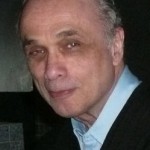
HAROLD L. BECK was a physicist for the U.S. Department of Energy (DOE)/ERDA/Atomic Energy Commission for over 36 y. Mr. Beck retired in 1999 as the Director of the Environmental Science Division of the DOE Environmental Measurements Laboratory (EML) in New York City and is presently a self-employed consultant specializing in environmental radiation dose reconstructions. During his tenure at EML, he also served as Director of the EML Instrumentation Division, and as Acting Deputy Director of the Laboratory. Mr. Beck has authored well over 100 publications in the areas of radiation physics, radiation measurement, dose reconstruction, environmental radiation, and radiation dosimetry. He served as Scientific Vice President for Radiation Measurements and Dosimetry of NCRP from 1996 to 2003, and in 2004 was elected to Distinguished Emeritus membership in NCRP. From 2004 to 2006, he served as a member of the National Academy of Sciences, National Research Council (NAS/NRC) Board on Radiation Effects Research /Nuclear and Radiation Studies Board. He currently serves as a member of the U.S. Scientific Review Group, DOE Russian Health Studies Program. He has served as an expert member on a number of NCRP and NAS/NRC scientific studies related to radiation dosimetry and as Chair of two NCRP committees and one NCRP Program Committee. He is a member of the American Association for the Advancement of Science, the American Nuclear Society, and a Fellow of the Health Physics Society. |

LAWRENCE T. DAUER
is an Attending Physicist in the Departments of Medical Physics and Radiology at Memorial Sloan Kettering Cancer Center and serves at their Corporate Radiation Safety Officer. He serves as a member of the Nuclear and Radiation Studies Board of the National Academy of Sciences, Engineering and Medicine. He is a former Board member and current Council member of NCRP and is the Scientific Director of the Million Person Study. He has served as Chair or Co-Chair on several NCRP scientific committees associated with radiation protection of workers, patients, and members of the public. He served 7 y on the International Commission on Radiological Protection Committee 3, Radiation Protection in Medicine. |
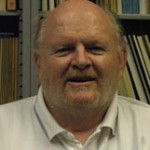
KEITH F. ECKERMAN
is a leading expert in computational dosimetry having served on International Commission on Radiological Protection (ICRP) Committee 2 and is now an Emeritus Member of the ICRP. He has received several scientific achievement awards, including the 39th Lauriston Taylor Lecturer for NCRP and Gold Medal for Radiation Protection awarded by the Royal Swedish Academy of Sciences. He is currently retired from Oak Ridge National Laboratory. |
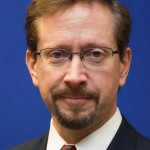
Derek Hagemeyer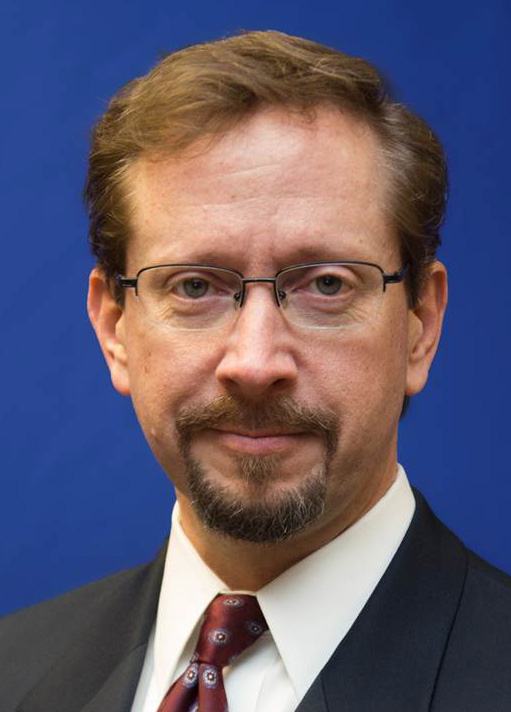
is the Associate Director for Human Health and Environment at Oak Ridge Associated Universities (ORAU). He is responsible for the staff, resources, and program operations associated with human subject health and protection surveillance as well as the independent environmental assessment and verification under the U.S. Department of Energy (DOE) Oak Ridge Institute for Science and Education. These programs provide DOE with the stewardship of several key data assets related to the long-term health effects from exposure to radiation and beryllium to current and former DOE workers and unbiased, independent assessments of environmental clean-up at contaminated sites. He has three decades of experience in occupational radiation exposure including regulatory requirements, records and information systems, and project management. He serves as the principal investigator for the DOE Radiation Exposure Monitoring System and the U.S. Nuclear Regulatory Commission (NRC) Radiation Exposure Information and Reporting System projects, which involve the management and analysis of occupational radiation exposure records received at all DOE facilities and NRC licensees. He is also the project manager of the NRC’s radioactive effluent project which entails the collection and analysis of radioactive material releases from nuclear power plants. Mr. Hagemeyer is the group manager over ORAU’s Professional Training Programs, which has provided training in the radiological sciences since 1948. He is currently serving as Vice Chairman of the international Information System on Occupational Exposure (ISOE) Working Group on Data Analysis to provide support in the collection and analysis of ISOE's international database of radiation exposure information. ISOE is jointly sponsored by the Organisation for Economic Co-operation and Development and the International Atomic Energy Agency. He received his BS in nuclear engineering from the University of Virginia in 1987. |
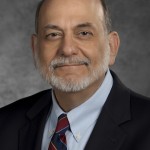
DONALD L. MILLER
Dr. Miller was elected to NCRP in 2006. He currently serves on the Board of Directors and as Chair of Program Area Committee 4 (Radiation Protection in Medicine). He is an author of NCRP Reports Nos. 168, 172, 177, 180, 184, and 185, and Statements Nos. 11 and 13. He served on the International Commission on Radiological Protection (ICRP) Committee 3 (Protection in Medicine) as a member from 2010 to 2013, and as Vice-Chair from 2013 to 2017. He is an author of ICRP Publications 117, 120, 135, and 139. He was Vice-Chair for the U.S. Environmental Protection Administration’s Federal Guidance Report No. 14, is a consultant to the International Atomic Energy Agency, and is a member of the World Health Organization’s Core Group of Experts on radiation protection of patients and staff. Dr. Miller was Professor of Radiology at the Uniformed Services University in Bethesda, Maryland from 1993 to 2012. He has served as Associate Editor of Radiology and the Journal of Vascular and Interventional Radiology and is an author of more than 200 papers in peer-reviewed journals and more than 40 book chapters and reports. He is a Fellow of the Society of Interventional Radiology (SIR) and the American College of Radiology (ACR), and an Honorary Member of both the American Association of Physicists in Medicine and the International Organization for Medical Physics. He chaired SIR’s Safety and Health Committee from 1999 to 2011 and the ACR Guidelines Interventional Committee from 2008 to 2012. His research interests have centered on radiation protection in medicine. |
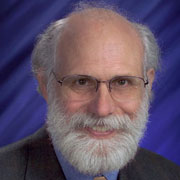
BRUCE A. NAPIER is a Staff Scientist in the Environmental Analysis and Engineering Group at Pacific Northwest National Laboratory in Richland, Washington and has been for the past 41 y. Mr. Napier works with the development and operation of models concerned with the environmental transport of radiological and chemical contaminants. His expertise and experience lie in the areas of radiation dose reconstruction, computer modeling, environmental analysis, and human health risk analysis. He is an author of the widely-used GENII computer code. Mr. Napier was the Chief Scientist for the Hanford Environmental Dose Reconstruction Project that evaluated releases from the Hanford Site during production of plutonium. He is now a Principal Investigator for the U.S./Russian Joint Coordinating Committee on Radiation Effects Research, working on the dose reconstructions at the Russian Mayak Production Association for both the workers at and the populations living near the points of atmospheric release and along the Techa River downstream. Mr. Napier is a Scientific Vice President and past member of the Board of Directors of NCRP, a past committee member of the U.S. Environmental Protection Agency's Science Advisory Board and the National Academy of Sciences, a Fellow of the Health Physics Society, and past Chair of oversight panels for the National Cancer Institute's Chernobyl Studies. |
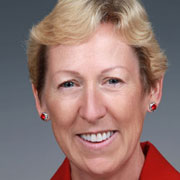
KATHRYN H. PRYOR
has been a member of Program Area Committee (PAC) 2 since 2007 and a member of NCRP since 2010. She has served on Scientific Committees 2-4, 2-5, 2-7, 2-8, 1-19, and 6-9. Ms. Pryor has served on the NCRP Board of Directors and was Scientific Vice President of PAC 2. She received her BS in Biology in 1979 and MS in Radiological Sciences in 1981, both from the University of Washington. Ms. Pryor retired from the Pacific Northwest National Laboratory (PNNL) in Richland, Washington in 2018. She was the Chief Health Physicist at PNNL, providing management and technical support to the PNNL Radiation Protection Division since 1992. She also served as the Chief Radiological Engineer for the design of the Pit Disassembly and Conversion Project. Ms. Pryor previously held radiation protection technical support positions at the San Onofre Nuclear Generating Station and the Trojan Nuclear Plant and was the Radiation Safety Officer at the University of Southern California Health Sciences Campus. Ms. Pryor is a Fellow member of the Health Physics Society (HPS) and served as President-Elect, President, and Past President from 2010 to 2013. She is certified in comprehensive practice by the American Board of Health Physics (ABHP) and served on the ABHP both as a member and Chair from 1998 to 2002. She also previously served as the President of the American Academy of Health Physics. Ms. Pryor was awarded the William McAdams Outstanding Service Award by ABHP in 2007 and the John P. Corley Meritorious Service Award by the Columbia Chapter of HPS in 2003. |
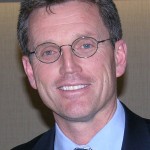
DAVID A. SCHAUER
is an internationally recognized expert with more than 39 y of experience in radiation measurements, protection, effects, policy, and radiological/nuclear preparedness and response. He is widely published and is often invited to speak at conferences and symposia. He has served as a technical expert for the International Atomic Energy Agency and World Health Organization, and is a member of two editorial boards. Dr. Schauer’s career began in 1984 when he was commissioned as a radiation specialist in the U.S. Navy. His assignments included operational, research, teaching and leadership positions at commands from San Diego, California to Kittery, Maine, with most of his time spent in Bethesda, Maryland. His final tour (1999 to 2004) was on the faculty (Radiology and Radiological Sciences) of the Uniformed Services University of the Health Sciences. Following his retirement from the Navy, Dr. Schauer remained in Bethesda where he served as the Executive Director of NCRP from 2004 to 2012. During his tenure the Council published more than 40 reports, commentaries, statements, and annual meeting proceedings on a wide range of basic and applied topics with direct impact on federal, state and local regulations, policies and guidelines. He reorganized NCRP’s financial, administrative, publication and executive functions to ensure compliance with the Congressional Charter. He is now Executive Director Emeritus at NCRP. Dr. Schauer also served as Executive Secretary of the International Commission on Radiation Units and Measurements from 2014 to 2019. In 2016, Dr. Schauer returned to the Armed Forces Radiobiology Research Institute as a radiation physicist in the Radiation Sciences Department where he first served as a junior naval officer from 1986 to 1990. |
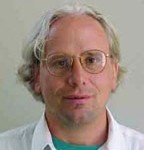
DANIEL O. STRAM is Professor in the Department of Preventive Medicine at the Keck School of Medicine of the University of Southern California. He received his PhD in statistics from Temple University in 1983 and served as a postdoctoral fellow in the Biostatistics Department of the Harvard School of Public Health from 1984 to 1986. From 1986 to 1989 he was a research associate at the Radiation Effects Research Foundation in Hiroshima, Japan. Dr. Stram's main areas of research are in the statistical problems that arise in the design, analysis and interpretation of epidemiological studies of cancer and other diseases. His work on radiation epidemiology studies includes: (1) helping to characterize the statistical nature of errors in dose estimates for the atomic-bomb survivor study, (2) developing a multi-level variance components model for the dosimetry used in the Colorado Plateau uranium miners cohort for the purpose of better understanding dose and dose-rate effects in those data, and (3) characterizing study power and sample size issues in epidemiologic studies in which a complex dosimetry system is used to estimate radiation dose. Besides the field of radiation epidemiology his past and current research has focused on statistical issues relevant to clinical trials of treatment for pediatric cancer, nutritional epidemiology studies, and to studies of the genetics of complex diseases. He is an elected fellow of the American Statistical Association and has authored or co-authored over 200 peer reviewed articles. |

James L. Thompson
|
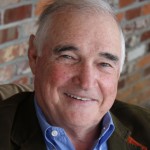
JOHN E. TILL is president Risk Assessment Corporation (RAC) (www.racteam.com). He graduated from the U.S. Naval Academy 1967. He served in the U.S. Navy Nuclear Submarine Program and retired a Rear Admiral in the U.S. Naval Reserve in 1999. As a reserve flag officer he served as Deputy Commander Submarine Force Atlantic Fleet and Deputy Commander US Strategic Command and Commander Naval Reserve Readiness Command Region TEN. He is a recipient of Department of Defense Distinguished Service Medal, the Legion of Merit, two Navy Meritorious Service Medals, two Navy Commendation Medals, and the Navy Achievement Medal. Following his active duty service, Dr. Till received his MS degree from Colorado State University in 1972 and his PhD degree from the Georgia Institute of Technology in 1976. In 1977 he formed RAC. Since its formation RAC has played a key role in our understanding of radioactive materials when they enter the environment and how they affect humans. He has been responsible for major historical dose reconstruction projects at U.S. Department of Energy (DOE) facilities including Hanford, Washington, Fernald, Ohio, Rocky Flats, Colorado, the Savannah River site, and Los Alamos National Laboratory. Working with Vanderbilt University and National Cancer Institute, Dr. Till’s team developed the first in-depth dosimetry from exposures to military personnel who participated in the atmospheric testing of nuclear weapons between 1945 and 1963. Working with epidemiologists, Dr. Till team of researchers is enabling us to better understand if there is a higher incidence of cancer among this group of over 114,000 veterans. In 1995, Dr. Till received the E.O. Lawrence Award from DOE in the field of Environmental Science and Technology. He was selected for this honor for his work in public involvement and research in dose reconstruction. He was presented the L.S. Taylor Medal and presented the Taylor Lecture at the annual meeting of NCRP in 2013. In 2020, he received the Health Physics Society’s Distinguished Scientific Achievement Award. Dr. Till’s scientific achievements include over 200 scientific publications and books that stress new approaches to apply and simplify transport and fate mechanisms in environmental and risk analysis. His most recent book, Radiological Risk Assessment and Environmental Analysis was published by Oxford University Press. He served on the International Commission on Radiological Protection (ICRP) for 12 y and worked with the International Atomic Energy Agency on various regulatory reports. He is a Distinguished Emeritus Member of NCRP and has served on and chaired various committees of the National Academy of Sciences. |
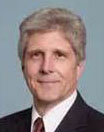
R. CRAIG YODER directed Landauer's technical activities relating to radiation dosimetry, particularly for applications in radiation protection from 1983 through his retirement in 2015. Additionally, he oversaw subsidiary and partner businesses located in Australia, Brazil, China, France, Mexico, Japan, Sweden and Turkey. An internationally known expert in radiation monitoring, Dr. Yoder led Landauer's transition from film and thermoluminescent dosimetry technology to optically stimulated luminescence, an assignment that required strategic planning and direction in areas spanning scientific research, product development, manufacturing, laboratory operations and marketing. From 1993 to 2001, he was Vice President of Operations and managed Landauer's manufacturing and analytical laboratory activities in addition to overseeing research and development programs. Dr. Yoder is a member of NCRP and former President of the Council on Ionizing Radiation Measurements and Standards. He has served on several national and international committees to develop dosimetry standards. He was a member of a National Research Council committee that examined the accuracy of film badge measurements made during atmospheric nuclear weapons testing. Dr. Yoder earned his MS and PhD degrees in Bionucleonics at Purdue University and received a BS in Pre-Medicine from Davidson College. He also completed the Executive Program at Stanford University. He is Certified in Comprehensive Health Physics by the American Board of Health Physics. |
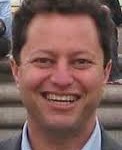
Cary J. Zeitlin is a Senior Research Scientist with Leidos Innovations Corporation, working for the National Aeronautics and Space Administration (NASA) Johnson Space Center Space Radiation Analysis Group to assess exposures and risks to astronauts in current and future mission scenarios. He began his career in particle physics in the early 1980s, scanning nuclear emulsion that had been exposed to a beam of high-energy iron ions at the Lawrence Berkeley Laboratory (LBL) Bevalac. As this is one of the most tedious jobs imaginable, greener pastures soon beckoned, leading him to join the TPC/Two-Gamma Collaboration at the Stanford Linear Accelerator Center. After receiving his PhD in experimental high-energy physics and spending another 3 y at the Stanford Linear Accelerator Center as a postdoc studying the decays of the Z boson, Dr. Zeitlin returned to LBL and to nuclear physics in 1991 to work on a long-term project measuring the fragmentation cross sections most pertinent to NASA’s space radiation transport codes. This experience led to his taking over as Principal Investigator of the Martian Radiation Environment Experiment (MARIE) aboard the Mars Odyssey orbiter following the untimely passing of Dr. Gautam Badhwar. This led subsequently to his role as Co-Investigator with the Radiation Assessment Detector (RAD) project starting in 2008, as the instrument was being prepared for integration into the Curiosity Rover. After the successful transit and spectacular landing of Curiosity on Mars in 2012, RAD has been operating almost without interruption on the surface, sending back the first detailed radiation environment measurements from another planet. A second RAD was built for the International Space Station and began flight operations in early 2016. Dr. Zeitlin has received two Outstanding Performance awards from LBL and has received three awards from NASA for his work on the MARIE, RAD, and CRaTER projects. He was elected to the NCRP in 2014. |
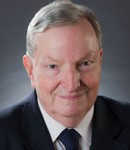
Stephen Balter
|

Terry A. Brock
|
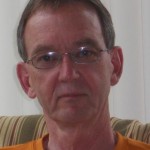
Richard Leggett
|
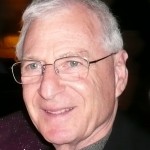
MARVIN ROSENSTEIN is a consultant, currently concentrating on the preparation of scientific reports produced by NCRP in all subject areas. From 1982 to 1995, he was Director, Office of Health Physics at the Center for Devices and Radiological Health, U.S. Food and Drug Administration. He also served in a number of scientific and management positions related to radiation protection during his 33 y career as a Commissioned Officer in the U.S. Public Health Service, from 1962 to 1995. He received a BS in Chemical Engineering (University of Maryland, 1961), an MS in Environmental Engineering (Rensselaer Polytechnic Institute, 1966) and a PhD in Nuclear Engineering (University of Maryland, 1971). His technical work has concentrated on radiation dosimetry, particularly with regard to x rays used for medical diagnosis, epidemiological studies of exposed populations, and public radiation emergencies. He is a Distinguished Emeritus Member of NCRP (after serving as a Council member for 18 y), and an Emeritus member of Committee 3 (Protection in Medicine) of the International Commission on Radiological Protection [after serving on Committee 3 for 28 y (1985 to 2013)]. He was also a member of the International Commission on Radiation Units and Measurements report committee that produced Report 74, Patient Dosimetry for X Rays Used in Medical Imaging. |




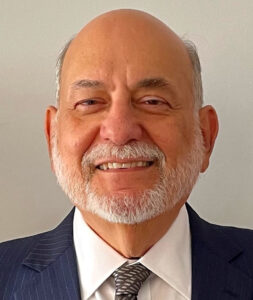 is the Chief Medical Officer for the Office of Radiological Health at the Food and Drug Administration’s (FDA) Center for Devices and Radiological Health. He earned a BA from Yale University and an MD from New York University, and completed a residency in diagnostic radiology and a fellowship in interventional radiology at New York University Medical Center. He is board certified in Diagnostic Radiology and Vascular and Interventional Radiology. Prior to joining FDA, he practiced interventional radiology for three decades at the National Institutes of Health and the National Naval Medical Center in Bethesda, Maryland.
is the Chief Medical Officer for the Office of Radiological Health at the Food and Drug Administration’s (FDA) Center for Devices and Radiological Health. He earned a BA from Yale University and an MD from New York University, and completed a residency in diagnostic radiology and a fellowship in interventional radiology at New York University Medical Center. He is board certified in Diagnostic Radiology and Vascular and Interventional Radiology. Prior to joining FDA, he practiced interventional radiology for three decades at the National Institutes of Health and the National Naval Medical Center in Bethesda, Maryland.  served in the U.S. Navy from 1989 until 1994 as a nuclear propulsion plant operator, during which time he received the Southwest Asia Service Medal while stationed onboard the USS Abraham Lincoln. He received a BS in Biology and Chemistry in 1998 from Stephen F. Austin State University. Upon graduation, he became a health physicist working as a radioactive materials inspector for the Texas Department of Health, Bureau of Radiation Control. His primary focus during this time was on the routine inspections of industrial licensees, as well as investigations into radiation overexposures and other events resulting from the use of industrial sources of radiation. In 2001, he became a health physics inspector with the U.S. Nuclear Regulatory Commission (NRC), where he was promoted to Senior Health Physicist. During his time at NRC, Mr. Thompson participated in numerous investigations into radiation exposure events and radioactive contamination events, most notably the plutonium contamination event at the National Institute of Standards and Technology in Boulder, Colorado in 2008. Another incident investigation that he performed was at a coal burning power plant in Wheatland, Wyoming, whereby 17 employees were inadvertently exposed to radiation from the misuse of fixed nuclear gauges. Mr. Thompson has served as an instructor for the NRC’s Inspection Procedures course, teaching the principles of industrial uses of nuclear material and associated inspection techniques. Also, he was a finalist for the Leadership Excellence Award at the Dallas-Fort Worth Federal Executive Board awards banquet in June 2012.
served in the U.S. Navy from 1989 until 1994 as a nuclear propulsion plant operator, during which time he received the Southwest Asia Service Medal while stationed onboard the USS Abraham Lincoln. He received a BS in Biology and Chemistry in 1998 from Stephen F. Austin State University. Upon graduation, he became a health physicist working as a radioactive materials inspector for the Texas Department of Health, Bureau of Radiation Control. His primary focus during this time was on the routine inspections of industrial licensees, as well as investigations into radiation overexposures and other events resulting from the use of industrial sources of radiation. In 2001, he became a health physics inspector with the U.S. Nuclear Regulatory Commission (NRC), where he was promoted to Senior Health Physicist. During his time at NRC, Mr. Thompson participated in numerous investigations into radiation exposure events and radioactive contamination events, most notably the plutonium contamination event at the National Institute of Standards and Technology in Boulder, Colorado in 2008. Another incident investigation that he performed was at a coal burning power plant in Wheatland, Wyoming, whereby 17 employees were inadvertently exposed to radiation from the misuse of fixed nuclear gauges. Mr. Thompson has served as an instructor for the NRC’s Inspection Procedures course, teaching the principles of industrial uses of nuclear material and associated inspection techniques. Also, he was a finalist for the Leadership Excellence Award at the Dallas-Fort Worth Federal Executive Board awards banquet in June 2012.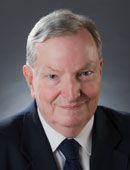 is a Clinical Professor of Radiology and Medicine at Columbia University. He earned an MS in Radiological Physics and a PhD in Experimental Physics. He is certified in Radiological Physics by the American Board of Radiology and licensed by New York State in Diagnostic Imaging, Radiation Therapy Physics, and Medical Health Physics. He is a past President of the Radiological and Medical Physics Society of New York, past Vice President of the Radiological Society of North America, a member of the Standards and Safety Committees of the Society for Interventional Radiology, and a member of editorial and review boards of several scientific journals. He received the Marvin M.D. Williams award from the American Association of Physicists in Medicine (AAPM) in 2017. He is a fellow of AAPM, the American College of Medical Physics, the American College of Radiology, the Society for Cardiovascular Angiography and Interventions, and the Society of Interventional Radiology. He currently serves on International Electrotechnical Commission working groups responsible for safety and performance standards for projection and interventional radiology. He has been a member of NCRP Council for more than a decade. He chaired scientific committees that produced NCRP Report No. 168, Radiation Dose Management for Fluoroscopically-Guided Interventional Medical Procedures and NCRP Statement No. 11, Outline of Administrative Policies for Quality Assurance and Peer Review of Tissue Reactions Associated with Fluoroscopically-Guided Interventions (2014). He has over 100 refereed publications in the areas of radiological imaging, radiological health, and related topics.
is a Clinical Professor of Radiology and Medicine at Columbia University. He earned an MS in Radiological Physics and a PhD in Experimental Physics. He is certified in Radiological Physics by the American Board of Radiology and licensed by New York State in Diagnostic Imaging, Radiation Therapy Physics, and Medical Health Physics. He is a past President of the Radiological and Medical Physics Society of New York, past Vice President of the Radiological Society of North America, a member of the Standards and Safety Committees of the Society for Interventional Radiology, and a member of editorial and review boards of several scientific journals. He received the Marvin M.D. Williams award from the American Association of Physicists in Medicine (AAPM) in 2017. He is a fellow of AAPM, the American College of Medical Physics, the American College of Radiology, the Society for Cardiovascular Angiography and Interventions, and the Society of Interventional Radiology. He currently serves on International Electrotechnical Commission working groups responsible for safety and performance standards for projection and interventional radiology. He has been a member of NCRP Council for more than a decade. He chaired scientific committees that produced NCRP Report No. 168, Radiation Dose Management for Fluoroscopically-Guided Interventional Medical Procedures and NCRP Statement No. 11, Outline of Administrative Policies for Quality Assurance and Peer Review of Tissue Reactions Associated with Fluoroscopically-Guided Interventions (2014). He has over 100 refereed publications in the areas of radiological imaging, radiological health, and related topics. is a senior health physicist with the U.S. Nuclear Regulatory Commission (NRC), where he has worked for 16 y. He is the current NRC program manager for the Radiation Exposure Information and Reporting System, the Analysis of Cancer Risks in Populations near Nuclear Facilities study, and the lead for the agency's participation in the One Million U.S. Radiation Workers and Veterans Heath Study. He is a current management board member and past Vice Chair of the Organisation for Economic Co-operation and Development / Nuclear Energy Agency 's Information System on Occupational Exposure. He's the agency liaison with NCRP and the International Commission on Radiological Protection and serves as the NRC representative on the Executive Committee of the Joint Coordinating Committee for Radiation Effects Research (Russian Health Studies). He has served as the project manager for the State-of-the-Art Reactor Consequence Analyses study and on the Risk Task Group that explored risk-informing the radioactive materials arena. Before NRC, he worked in health physics at a commercial nuclear power facility and at two universities. In addition to health physics, Dr. Brock has worked on environmental health and risk communication issues related to pesticides and hazardous substance clean-up sites. Dr. Brock holds a PhD in public health and MS in radiation heath physics and environmental health from Oregon State University. He holds a BS in health physics and industrial hygiene from Purdue University.
is a senior health physicist with the U.S. Nuclear Regulatory Commission (NRC), where he has worked for 16 y. He is the current NRC program manager for the Radiation Exposure Information and Reporting System, the Analysis of Cancer Risks in Populations near Nuclear Facilities study, and the lead for the agency's participation in the One Million U.S. Radiation Workers and Veterans Heath Study. He is a current management board member and past Vice Chair of the Organisation for Economic Co-operation and Development / Nuclear Energy Agency 's Information System on Occupational Exposure. He's the agency liaison with NCRP and the International Commission on Radiological Protection and serves as the NRC representative on the Executive Committee of the Joint Coordinating Committee for Radiation Effects Research (Russian Health Studies). He has served as the project manager for the State-of-the-Art Reactor Consequence Analyses study and on the Risk Task Group that explored risk-informing the radioactive materials arena. Before NRC, he worked in health physics at a commercial nuclear power facility and at two universities. In addition to health physics, Dr. Brock has worked on environmental health and risk communication issues related to pesticides and hazardous substance clean-up sites. Dr. Brock holds a PhD in public health and MS in radiation heath physics and environmental health from Oregon State University. He holds a BS in health physics and industrial hygiene from Purdue University. is a research scientist in the Environmental Sciences Division at Oak Ridge National Laboratory (ORNL). He received his PhD in mathematics from the University of Kentucky in 1972 and taught mathematics at the Ruhr University in Bochum, Germany, and the University of Tennessee before joining the Health Physics Division at ORNL in 1976. His main research interest is in physiological systems modeling, with primary applications to the biokinetics and dosimetry of radionuclides and radiation risk analysis. He is a member of Committee 2 of the International Commission on Radiological Protection (ICRP) and the ICRP Task Group on Internal Dosimetry. His physiological systems models of the human circulation, skeleton, and gastrointestinal transfer and his systemic biokinetic models for a number of elements are used by ICRP as dosimetry and bioassay models. He is the author of ICRP Publication 70, Basic Anatomical and Physiological Data for Use in Radiological Protection: The Skeleton and co-author of a number of other ICRP reports including the series of documents on doses to members of the public from intake of radionuclides (1989 to 1996), the updated Reference Man document (2002), and the Human Alimentary Tract Model (2006). He has authored over 100 open literature publications and in 1995 was named ORNL Author of the Year for the paper, “An Age-Specific Kinetic Model of Pb Metabolism in Humans.”
is a research scientist in the Environmental Sciences Division at Oak Ridge National Laboratory (ORNL). He received his PhD in mathematics from the University of Kentucky in 1972 and taught mathematics at the Ruhr University in Bochum, Germany, and the University of Tennessee before joining the Health Physics Division at ORNL in 1976. His main research interest is in physiological systems modeling, with primary applications to the biokinetics and dosimetry of radionuclides and radiation risk analysis. He is a member of Committee 2 of the International Commission on Radiological Protection (ICRP) and the ICRP Task Group on Internal Dosimetry. His physiological systems models of the human circulation, skeleton, and gastrointestinal transfer and his systemic biokinetic models for a number of elements are used by ICRP as dosimetry and bioassay models. He is the author of ICRP Publication 70, Basic Anatomical and Physiological Data for Use in Radiological Protection: The Skeleton and co-author of a number of other ICRP reports including the series of documents on doses to members of the public from intake of radionuclides (1989 to 1996), the updated Reference Man document (2002), and the Human Alimentary Tract Model (2006). He has authored over 100 open literature publications and in 1995 was named ORNL Author of the Year for the paper, “An Age-Specific Kinetic Model of Pb Metabolism in Humans.” News & Events
News & Events